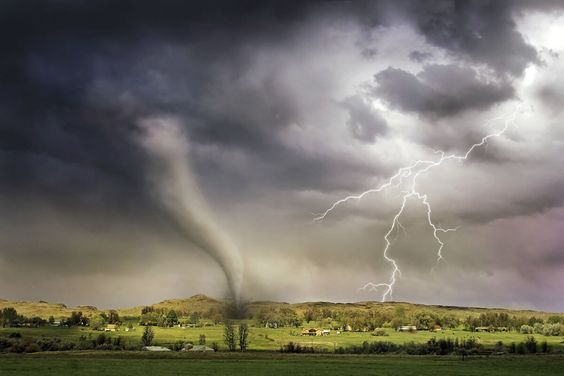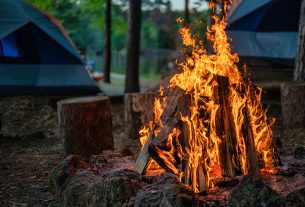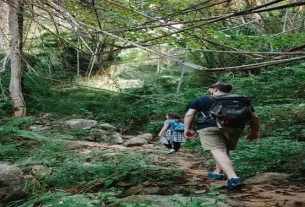Introduction
2023 is seeing an increasing threat of natural disasters, making it imperative for individuals and families to be prepared. Understanding the importance of being ready in the face of these unpredictable events is key to mitigating risks and ensuring personal safety.
General Preparedness
To be ready for any natural disaster, it is essential to have a comprehensive understanding of the various types of disasters and their potential impacts. This knowledge allows individuals to make informed decisions and take appropriate actions. Additionally, early warning systems play a crucial role in providing timely alerts, giving people the opportunity to prepare and evacuate if necessary.
Creating a family emergency plan is vital to ensure that everyone is on the same page and knows what to do in case of a natural disaster. This plan should incorporate designated meeting points, communication strategies, and responsibilities assigned to each family member.
Assembling an emergency supply kit is also imperative. This kit should include essential items such as non-perishable food, water, medications, first aid supplies, flashlights, batteries, and important documents. Additionally, it is crucial to regularly update and maintain this kit to ensure its effectiveness when needed.
Preparing for Specific Natural Disasters
Surviving Earthquakes
- Earthquake-prone areas and risk assessment
- Understanding which regions are more prone to earthquakes allows individuals to assess their personal risk.
- Collaborating with local authorities and experts can provide valuable information regarding the likelihood of earthquakes in a particular area.
- Securing your home against earthquakes
- Conducting a thorough assessment of one’s home to identify potential vulnerabilities is crucial.
- Retrofitting techniques, such as reinforcing foundations or securing heavy furniture, can significantly reduce the risk of damage during an earthquake.
- Safety measures during an earthquake
- Drop, cover, and hold on: this is a recommended action to take during an earthquake to protect yourself from falling objects and debris.
- Evacuating to open areas away from buildings, trees, and power lines after the shaking subsides can further ensure personal safety.
- Post-earthquake actions and recovery
- Assessing and documenting damages to the property is essential for insurance claims and potential assistance.
- Seeking professional assistance for structural evaluations and repairs is advisable, as it ensures the safety of the residence after the earthquake.
Navigating Hurricanes and Tropical Storms
- Understanding hurricane forecasting and categories
- Staying informed about weather forecasts and understanding the severity of different storm categories is crucial for preparedness.
- Paying attention to evacuation orders and the projected path of the hurricane enables individuals to make informed decisions about their safety.
- Preparing your home for hurricane season
- Reinforcing windows and doors, trimming trees, and securing loose outdoor objects are important steps in fortifying a home against hurricane damage.
- Investing in storm shutters or hurricane-resistant glass can provide an additional layer of protection.
- Evacuation planning and routes
- Identifying evacuation routes in advance and having a plan ready ensures a smoother evacuation process.
- Collaborating with local authorities and following their guidance is essential for reaching safe shelters.
- Staying safe during a hurricane/storm
- Monitoring weather updates and staying indoors during the storm is crucial.
- Maintaining access to emergency supplies and staying away from windows and exterior doors helps protect against flying debris.
Coping with Wildfires
- Reducing the risk of wildfire damage to your property
- Creating and maintaining a defensible space around the property can significantly reduce the risk of wildfires spreading.
- Regularly clearing dry vegetation, ensuring proper storage of flammable materials, and maintaining fire-resistant roofing materials are important preventive measures.
- Creating a fire-resistant landscape
- Choosing fire-resistant plants, strategically arranging vegetation, and maintaining appropriate spacing between trees and plants are key elements of a fire-resistant landscape.
- Regularly removing dead plants and debris can further minimize fire hazards.
- Wildfire evacuation plans
- Understanding and following evacuation orders in a timely manner is crucial for personal safety.
- Collaborating with local authorities and having predetermined meeting points or designated shelters in case of evacuation is advisable.
- Safeguarding personal belongings during wildfires
- Creating digital backups of important documents and storing them securely off-site is essential.
- Having an emergency kit with essential items ready to grab, including medications and irreplaceable valuables, ensures a smoother evacuation process.
Surviving Floods
- Flood-risk assessment and early flood warning
- Conducting a flood-risk assessment helps individuals understand the likelihood of flooding in their area.
- Staying informed about local flood warning systems and following evacuation orders promptly are crucial for personal safety.
- Preventing flood damage to your home
- Installing flood barriers, such as sandbags, can help mitigate water intrusion into buildings.
- Elevating electrical systems, appliances, and furniture above the flood level can minimize damage.
- Evacuation and emergency shelters during floods
- Knowing the designated evacuation routes and nearby emergency shelters can facilitate a safe evacuation process.
- Collaborating with local emergency management authorities and heeding their guidance is essential.
- Ensuring safety during and after a flood
- Avoiding floodwaters and not attempting to drive or walk through them helps prevent injuries and accidents.
- Taking precautions to avoid contaminated water and seeking medical attention if necessary ensures personal health and well-being.
Coping with Tornadoes
- Introduction to tornadoes and their threats
- Understanding the basic characteristics and risks associated with tornadoes is important for preparedness.
- Recognizing tornado warning signs, such as dark and rotating clouds, helps individuals take appropriate action.
- Identifying tornado-prone regions
- Gathering information from local meteorological agencies or tornado tracking resources allows individuals to identify regions more susceptible to tornadoes.
- Collaborating with local authorities and experts provides valuable insights into preparedness measures specific to the area.
- Establishing a tornado emergency plan
- Identifying tornado-safe areas within or near the residence, such as basements or storm shelters, helps individuals seek shelter rapidly.
- Practicing tornado drills regularly with family members enhances preparedness and ensures everyone knows what to do during an actual event.
- Taking shelter during a tornado
- Moving to the designated tornado-safe areas or the lowest level of the building protects individuals from the strong winds and flying debris associated with tornadoes.
- Covering oneself with mattresses or heavy blankets adds an extra layer of protection.
Expert Tips for Natural Disaster Preparedness
A. Preparing emergency supplies for pets
- Ensuring that pets have essential items such as food, water, medications, and comfort items in their emergency kits is vital.
- Identifying pet-friendly shelters and having evacuation plans that include pets prevent leaving them behind during emergencies.
B. Strategies for ensuring mental and emotional well-being during disasters
- Staying connected with loved ones, talking about feelings, and practicing self-care contribute to maintaining mental and emotional well-being.
- Seeking professional help if needed and taking breaks from consuming distressing news can help manage stress.
C. Effective communication during a natural disaster
- Establishing multiple communication channels, including text messages and social media platforms, ensures continued communication even when traditional means are disrupted.
- Sharing important information with neighbors and loved ones can contribute to a more resilient community.
D. Understanding insurance coverage and disaster assistance
- Reviewing insurance policies regularly and understanding the extent of coverage for various natural disasters avoids surprises during recovery efforts.
- Familiarizing oneself with available disaster assistance programs and contacting relevant agencies or organizations can facilitate post-disaster recovery.
Post-Disaster Recovery
A. Assessing property damage safely
- Prioritizing personal safety during the assessment process is crucial.
- Documenting damages thoroughly through photographs and written descriptions assists in insurance claims and disaster assistance.
B. Dealing with insurance claims and disaster assistance
- Contacting insurance providers promptly and providing accurate documentation expedites the claims process.
- Researching available disaster assistance programs and following the specific application procedures helps in accessing support.
C. Coping with trauma and seeking mental health support
- Recognizing the emotional impact of a natural disaster and seeking support from mental health professionals or support groups can aid in recovery.
- Encouraging open conversations about experiences and emotions within the community fosters healing and resilience.
D. Rebuilding and moving forward
- Developing a recovery plan and setting realistic goals help individuals and communities move forward after a natural disaster.
- Engaging with local recovery programs and resources can provide guidance, support, and potential financial assistance.
Frequently Asked Questions (FAQs)
A. What are the most common natural disasters in 2023?
- While the frequency and severity of natural disasters can vary, common ones in 2023 include earthquakes, hurricanes, wildfires, floods, and tornadoes.
B. How can I protect my home against multiple natural disasters?
- Implementing a range of preventive measures specific to each natural disaster, such as securing windows, creating defensible spaces, and elevating electronics, can help protect against multiple disasters.
C. Where can I find emergency shelters during a disaster?
- Local emergency management agencies or organizations usually provide information on designated emergency shelters, evacuation routes, and other resources.
D. What should I include in an emergency supply kit?
- An emergency supply kit should include non-perishable food, water, medications, first aid supplies, flashlights, batteries, important documents, and personal hygiene items, among other essentials.
E. How can I assist others during a natural disaster?
- Donating to reputable disaster relief organizations, volunteering, or offering support to affected individuals or communities are some ways to aid others during and after a natural disaster.
Conclusion
By being prepared and taking necessary steps to protect ourselves and our loved ones, we can navigate the increasing threat of natural disasters in 2023 with greater resilience and peace of mind. Personal responsibility and immediate action are key in surviving and recovering from these unpredictable events. Let us prioritize preparedness and encourage others to do the same, ensuring the safety and well-being of our communities.



